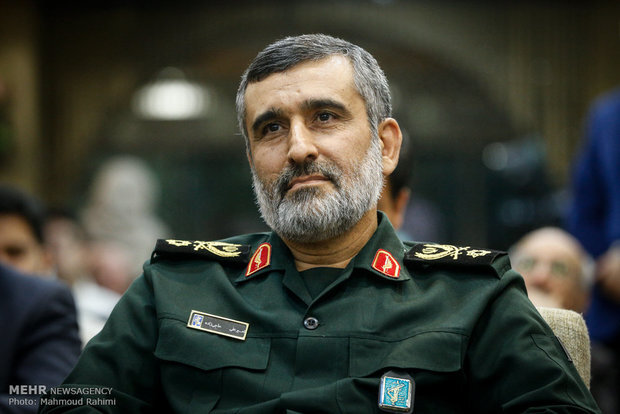General: Iran still digging missile tunnels 24/7

TEHRAN – Amir Ali Hajizadeh, commander of the aerospace unit of the Islamic Revolution Guards Corps (IRGC), has said Iran is still digging missile tunnels 24/7, thirty five years after it began the project.
“The idea behind these [underground] cities dates back to the year 1363 (1984-1985), and in fact the first tunnel was built before the first missile was imported,” Hajizadeh said on Monday in an interview broadcast on state TV, Mehr reported.
“Our enemies’ concern is that these capabilities cannot be accessed by them,” he stated.
In January 2016, the TV aired exclusive footage of the IRGC’s deep underground tunnel filled with numerous Emad ballistic missiles.
The IRGC’s first underground missile facility was unveiled on October 14, 2015.
Back in March 2016, Hajizadeh said, “We have underground tunnels around the country and under mountains, where we store our missiles.”
“These tunnels cannot be destroyed even if targeted by atomic bombs,” he added.
The Islamic Republic maintains that its military might poses no threat to other countries, and that its defense doctrine is merely based on deterrence.
Elsewhere in his Monday remarks, Hajizadeh said only the superpowers of the world have the capability to design and produce precision-guided missiles and fewer than 10 countries in number produce precision-guided missiles.
“Today, we are the number one missile power in the region and we are among the 7 to 8 top missile powers in the world,” he added.
He went on to say that Iran’s achievements in the missile technology come while it had no airspace facilities almost 10 years ago.
“We were seeking to buy while they didn’t sell us any equipment,” the top general explained.
In August, Iran unveiled a domestically-built missile defense system dubbed “Bavar-373”
Bavar-373 is a mobile missile defense system designed to intercept and destroy incoming hostile targets. The system employs missiles that have a maximum range of 300 kilometers. The system is capable of simultaneously detecting up to 300 targets, tracking 60 targets at once and engaging six targets at a time.
President Hassan Rouhani said after the unveiling ceremony that the missile defense system is more powerful than S-300 missile system and is more like S-400.
Tensions have soared between Iran and the U.S. in recent months, especially after the U.S. drone downing incident and the drone attacks on Saudi Arabia’s Aramco facilities.
On June 20, the IRGC’s aerospace unit downed an American RQ-4 Global Hawk drone over the Strait of Hormuz after it violated Iranian airspace. Despite the U.S. claims that the drone had been flying over international waters, Iran put on show the retrieved parts of the drone in its own territorial waters where it was shot down.
The drone was shot by homegrown air defense missile system “Khordad-3rd”.
General Hajizadeh said at the time that the intruding drone had received warnings for four times before being shot down.
Following the incident, IRGC Chief Major General Hossein Salami said the downing of the drone sent a “clear message” to Washington.
“The message is that while Tehran is not seeking war it is completely ready to fight if necessary,” he said.
MH/PA
